Past, Present, Future
Questlove’s personal history of hip-hop
Questlove’s Personal History of Hip-Hop
An elegiac retelling of rap’s origins, Hip-Hop Is History also ends with a sense of hope.
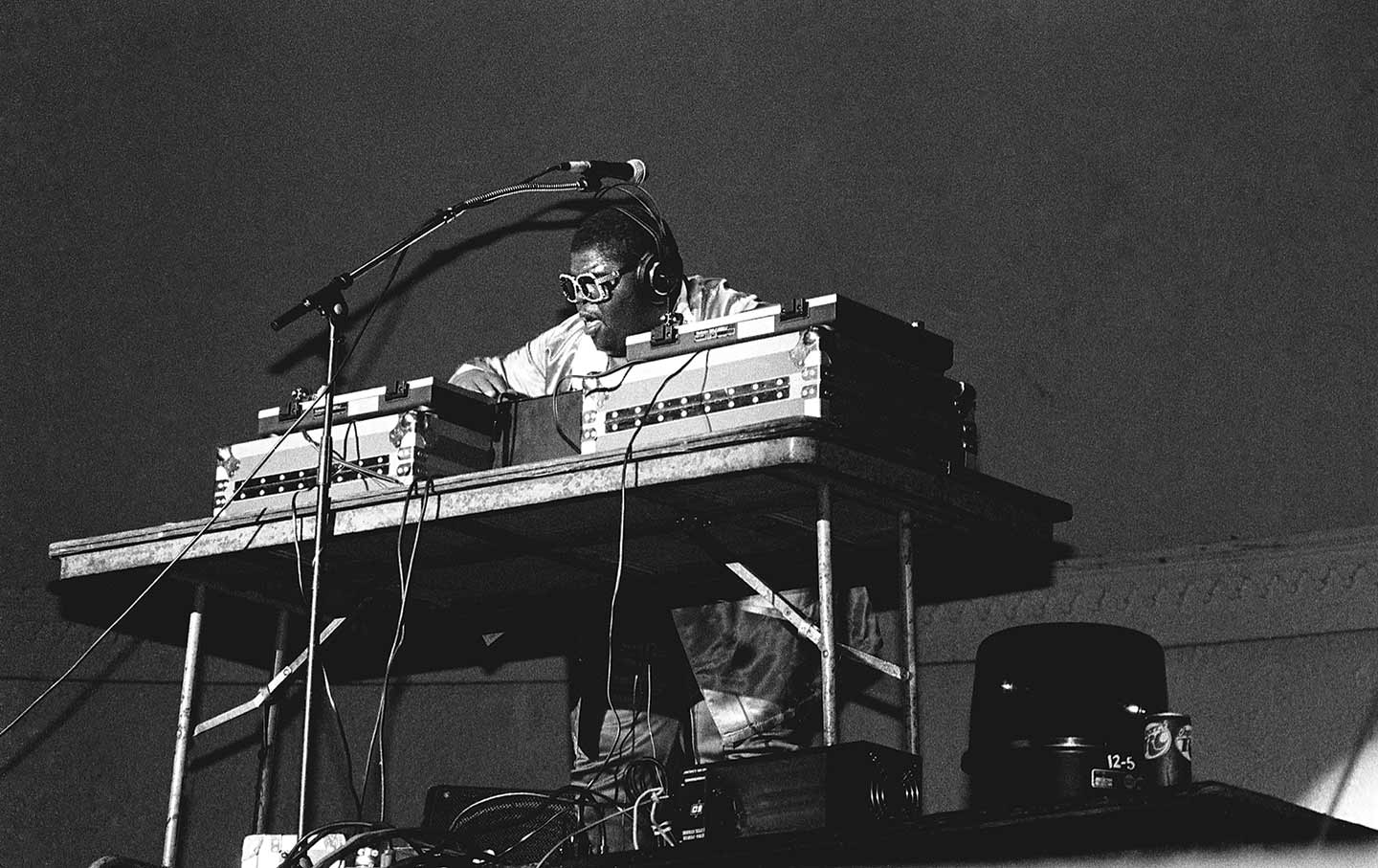
Buffy (Darren Robinson) of the Fat Boys in Chicago, 1985.
(Raymond Boyd / Getty)
This Juneteenth featured, among other festivities, a historic moment for hip-hop: a diss concert, so to speak, aimed directly at one of the biggest names in the genre: Drake. That evening at the Kia Forum in Inglewood, California, another of the biggest names in rap, Kendrick Lamar, brought together 25 West Coast legends from hip-hop’s past, present, and future to perform together. They did a lot of different songs, but the most well-aimed jab was the repeated performance of Lamar’s “Not Like Us”—a shot fired directly at Drake’s public persona and private life that also hit No. 1 on Billboard. It was a weird moment, because it meant that rap beef—rap beef!—had become international news. To me, that feels telling: Hip-hop has evolved. We’ve gone from the local rivalries of rap’s early days to stadiums, international tours, and rap becoming something like the lingua franca of popular music.
Books in review
Hip-Hop Is History
Buy this bookMaking this argument, however, requires some consensus about where and how it all began. That, it turns out, is a hard question to answer—maybe even harder than Drake trying to figure out the best response to Lamar’s recent barrage of diss tracks. Many hold the official beginning of hip-hop to be August 11, 1973, at a party in the Bronx where Clive Campbell, better known as DJ Kool Herc, spun two copies of a James Brown record in such a way that the beats were foregrounded and extended. It made a space for dancers to really get down; it also provided room for emcees to rap over it. That said, Ahmir Thompson—better known as Questlove, the six-time Grammy-winning cofounder of the Roots (who also won an Oscar for his documentary about the legendary Harlem Cultural Festival)—has some quibbles: “Herc was drawing on existing Jamaican music traditions, like toasting, where Jamaican vocalists performed over American R&B records,” he writes in Hip-Hop Is History, a new memoir of the genre. “But for me, it also draws on traditions in Black music that stretch back at least a decade earlier. I think of Ray Charles taking the Southern Tones’ ‘It Must Be Jesus,’ outfitting it with secular lyrics, and creating ‘I Got a Woman.’” He goes on to mention artists like Brown, Gil Scott-Heron, the Last Poets, and the Watts Prophets; the “progressive spirituality” of Curtis Mayfield; Melvin Van Peebles’s filmmaking; Maya Angelou, Dick Gregory, and more. It’s a characteristically long and varied list. “None of this should minimize Herc’s party,” Questlove adds. “It’s just that hip-hop didn’t come from one place, and it didn’t go to one place. It went everywhere.”
Hip-Hop Is History is Questlove’s attempt to chronicle where hip-hop went—maybe not every place, but surely most of them. It’s a very personal, very loquacious history—written with Ben Greenman, a longtime collaborator on Questlove’s other books—that is as much a catalog of Questlove’s taste in music as it is a record of what actually happened in the genre since 1973 (or, given his quibbles, even before).
Of course, because of the subject matter and the author, the personal elements are as much a feature of the book as anything else. We get an insider’s take on hip-hop’s history, a story of its past, present, and future from one of its leading, lifelong practitioners. But for Questlove, it’s not just about his own journey. As he explains, there’s a number of “invisible words” in the title, starting with “Hip-Hop Is (Revisionist) History.” “What I mean by that,” he writes, “is the entire life span of this young, vibrant genre has been marked by assessments and reassessments, declarations that proved to be untrue in a year’s time, or ten, and opinions that are cracked open like eggs to reveal newer opinions inside them.” To make his point clearer, we then get a set of other possible titles: “Hip-Hop Is (Recurring) History,” “Hip-Hop Is (Two) Histories,” and “Hip-Hop Is (My) History,” each with its own refractive meaning.
To tell these multiple stories, Hip-Hop Is History is divided into 10 chronological sections, along with an introduction, an epilogue, and an extensive concluding playlist, “Hip-Hop Songs I Actually Listen To.” Each section is titled after a famous lyric from the era and is introduced by a page or two of setup before Questlove dives into his meticulously detailed memories. To wit: We get snatches of his childhood in Philadelphia, doing dishes with his sister and hearing the Sugarhill Gang’s “Rapper’s Delight” for the first time: “The effect was instant. It was as if we had been plugged into an intergalactic power source.”
Obviously, this is one of the pivotal moments in Questlove’s career as a musician, the thing that got him started down the path to everything that came later. (The second thing: meeting Tariq Trotter, better known as the rapper Black Thought, with whom he cofounded the Roots.) But the real insight comes later, when Questlove compares the Sugarhill Gang to Michael Jackson. “Michael had abilities that were not easily transferred to children sitting at home by the radio,” he writes. And then, later, he notes how the group “had a brilliance all its own, but all it required to replicate was a good memory and a night of dedication. I had those. That led to something more complicated and intimate, which was a true shift in identity. I discovered that rap and hip-hop made me popular, but also that I responded to it. It was like a battery snapped into a toy.”
After that, we get more capsule histories of hip-hop interspersed with reminiscences from Questlove’s middle school and high school years. The book continues more or less in this vein, with the personal set alongside the historical, and as we get closer to the present, we see Questlove draw closer to hip-hop’s firmament. When this approach works, it really works—such as when he tells the story of the Roots meeting Kanye West the second time, in a dressing room in Los Angeles. There wasn’t enough room for West to really perform, so he improvised by rapping very close to Trotter very quietly—as in getting in his face and whispering. “Kanye was close-talking Tariq with his lyrics, like some kind of hip-hop Seinfeld episode,” Questlove writes. “Riq would listen for a while and then take a few steps, and Kanye would take a few steps, too, a shadow talking, a comer rapping.” It’s hilarious and compelling to imagine.
What’s less gripping, at least at times, is the history being told—not because it isn’t interesting, but because it’s occasionally too detailed. Questlove has impressive powers of recall; the problem is that the precision of his memories can sometimes slow the momentum of the stories.
Sometimes those details help his larger story, as when Questlove recounts the legendary 1995 Source Awards, which he attended with the Roots. There’s a lovely bit of scene-setting—”(Is that redundant, history in the past? Maybe not. There is plenty of history in the future. We just aren’t there yet)”—and then Questlove describes the growing feud between East Coast and West Coast rap by describing Nas’s ill-fitting Tommy Hilfiger shirt. “But awards were different, right? They rewarded pure creative achievement, right? Wrong,” he states. “Over and over again that night, nominees were read, nominees held their breaths, winners were read, and everyone except winners exhaled in disappointment.”
But at other times, the narrative arc gets lost in all of the details. Take a representative paragraph:
The “Buddy” single contained more than one important song, but it also contained more than one important “Buddy.” The album version, five minutes long, was subdued and sedate. The extended single, subtitled “Native Tongue Decision,” not only had the JBs and Tip, but also Monie Love and Queen Latifah. And it sounded different. The album version sampled the Commodores, the Five Stairsteps, Bo Diddley, and the Invitations. The longer version kept some of this, like the Stairsteps, but it was mainly powered by a sample from “Heartbeat,” a hit by the disco/boogie singer Taana Gardner. “Heartbeat” had been used before, by the Treacherous Three back in 1981, but it would really blow up in the late eighties and 1990s (you may know it from Ini Kamoze’s “Here Comes the Hotstepper”).
Interesting? Yes. Necessary? Debatable, though I’m charmed by Questlove’s fondness for parentheticals.
Having begun with the underground innovators of the late ’70s and ’80s, then moving through America’s fears about the genre in the 1990s before ending triumphantly in the 2020s, Hip-Hop Is History concludes in the present, relatively speaking. There’s no mention of the Juneteenth diss concert, because, well, a book about history has to end sometime. But there’s a melancholic feeling in the last three chapters, which begin with a lament about rappers and pills—“Drugs were portrayed as recreational but only as a feint: within minutes it was clear they were something more profound, a way of blocking out certain aspects of the society”—and end with what feels like a eulogy for those gone too soon. Questlove recounts how many people were missing from the industry by 2022: “Deaths from illness, particularly those that could be mitigated or prevented, are sad. They remind us of the fragility of existence. But they do not remind us of the cruelty of humans toward themselves and others.”
It’s a litany of unimaginable sadness, one that almost dares us to ask what might have been. And it broke Questlove. “It got to the point where I stopped writing obituaries on social media. I couldn’t keep up.” But “then it got to the point where I started to feel more philosophical about the entire process, less because of hip-hop proper and more because of the inevitable, unstoppable life cycle.” The fifth stage of grief, of course, is acceptance.
Popular
“swipe left below to view more authors”Swipe →While the last sections of Hip-Hop Is History are elegiac and often philosophical, Questlove does end on a note of not-quite-hope. His epilogue is a fictional introduction to the 100th anniversary of hip-hop in 2073. In it, he imagines himself with new synthetic organs, living in a flying house, explaining the old days. It’s a curious ending, not least because the hope that Questlove expresses is that hip-hop won’t exist in the future. “I don’t want to write the introduction for Hip-Hop Is Still, Still History in 2123. I’m not sure that I want there to be any more hip-hop in 2123,” he writes. “I want it to truly be history. Breakbeats are evidence of how we were once broken, and I want nothing more than to bring about a healing.” Hip-hop, he means here, is our pain turned into art: You either express it or it eventually destroys you. Questlove, of course, understands this intimately. You can feel it thrumming just beneath the surface. .
We cannot back down
We now confront a second Trump presidency.
There’s not a moment to lose. We must harness our fears, our grief, and yes, our anger, to resist the dangerous policies Donald Trump will unleash on our country. We rededicate ourselves to our role as journalists and writers of principle and conscience.
Today, we also steel ourselves for the fight ahead. It will demand a fearless spirit, an informed mind, wise analysis, and humane resistance. We face the enactment of Project 2025, a far-right supreme court, political authoritarianism, increasing inequality and record homelessness, a looming climate crisis, and conflicts abroad. The Nation will expose and propose, nurture investigative reporting, and stand together as a community to keep hope and possibility alive. The Nation’s work will continue—as it has in good and not-so-good times—to develop alternative ideas and visions, to deepen our mission of truth-telling and deep reporting, and to further solidarity in a nation divided.
Armed with a remarkable 160 years of bold, independent journalism, our mandate today remains the same as when abolitionists first founded The Nation—to uphold the principles of democracy and freedom, serve as a beacon through the darkest days of resistance, and to envision and struggle for a brighter future.
The day is dark, the forces arrayed are tenacious, but as the late Nation editorial board member Toni Morrison wrote “No! This is precisely the time when artists go to work. There is no time for despair, no place for self-pity, no need for silence, no room for fear. We speak, we write, we do language. That is how civilizations heal.”
I urge you to stand with The Nation and donate today.
Onwards,
Katrina vanden Heuvel
Editorial Director and Publisher, The Nation
More from The Nation
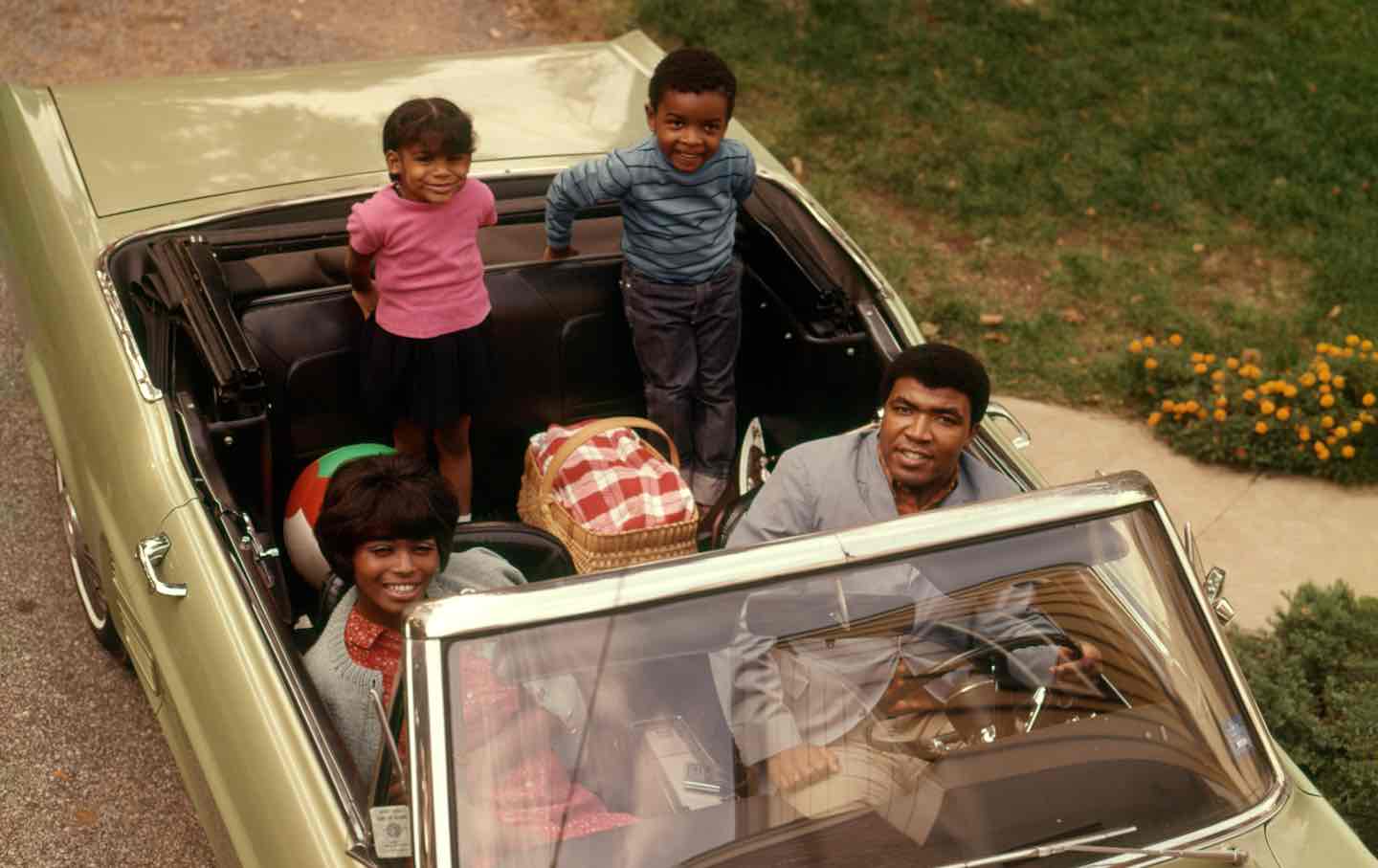
The Perils of a Post-Racial Utopia The Perils of a Post-Racial Utopia
In Nicola Yoon’s One of Our Kind, a dystopian novel of a Black upper-class suburb’s secrets, she examines the dangers of choosing exceptionalism over equality.
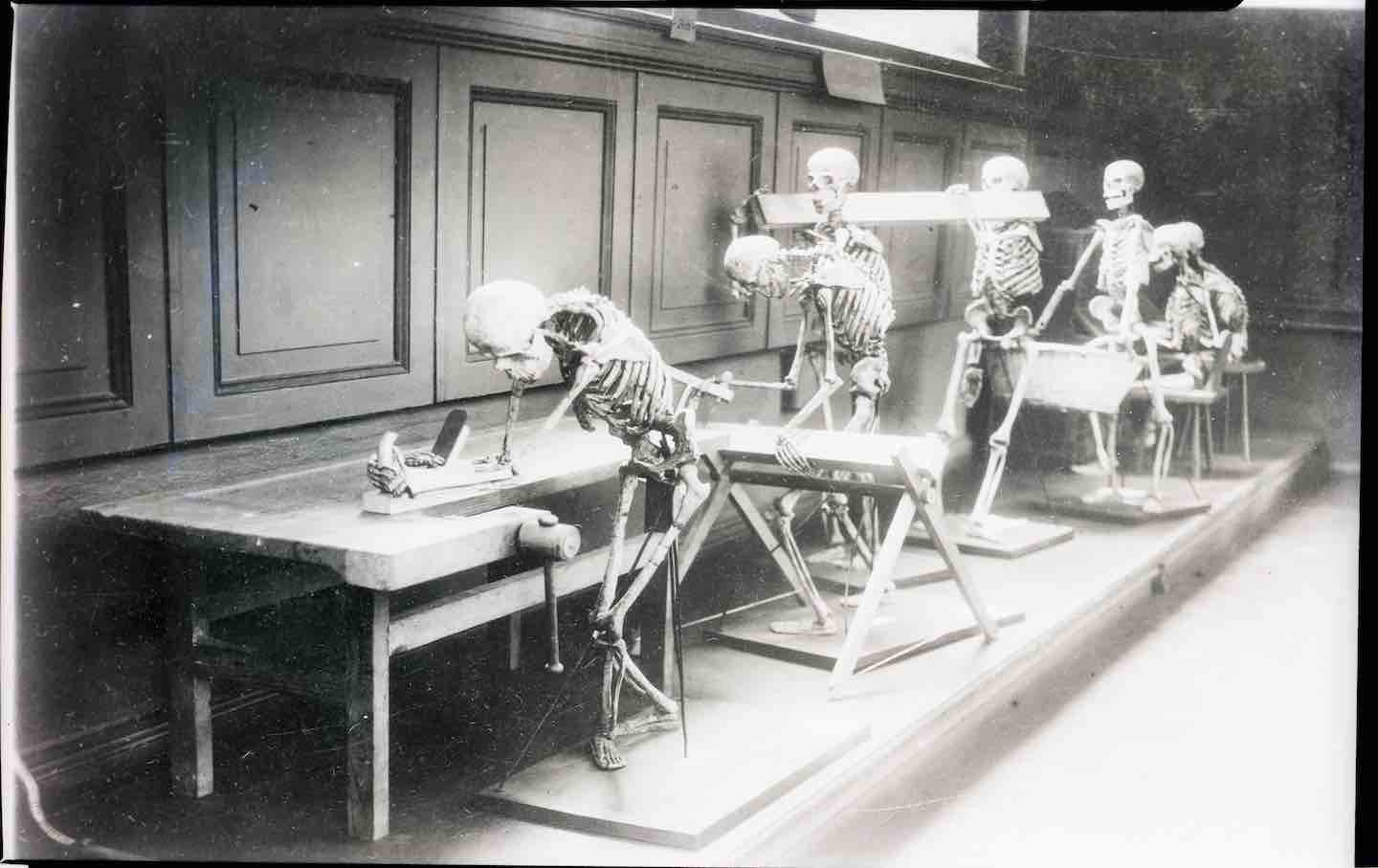
Why Americans Are Obsessed With Poor Posture Why Americans Are Obsessed With Poor Posture
A recent history of the 20th-century movement to fix slouching questions the moral and political dimensions of addressing bad backs over wider public health concerns.
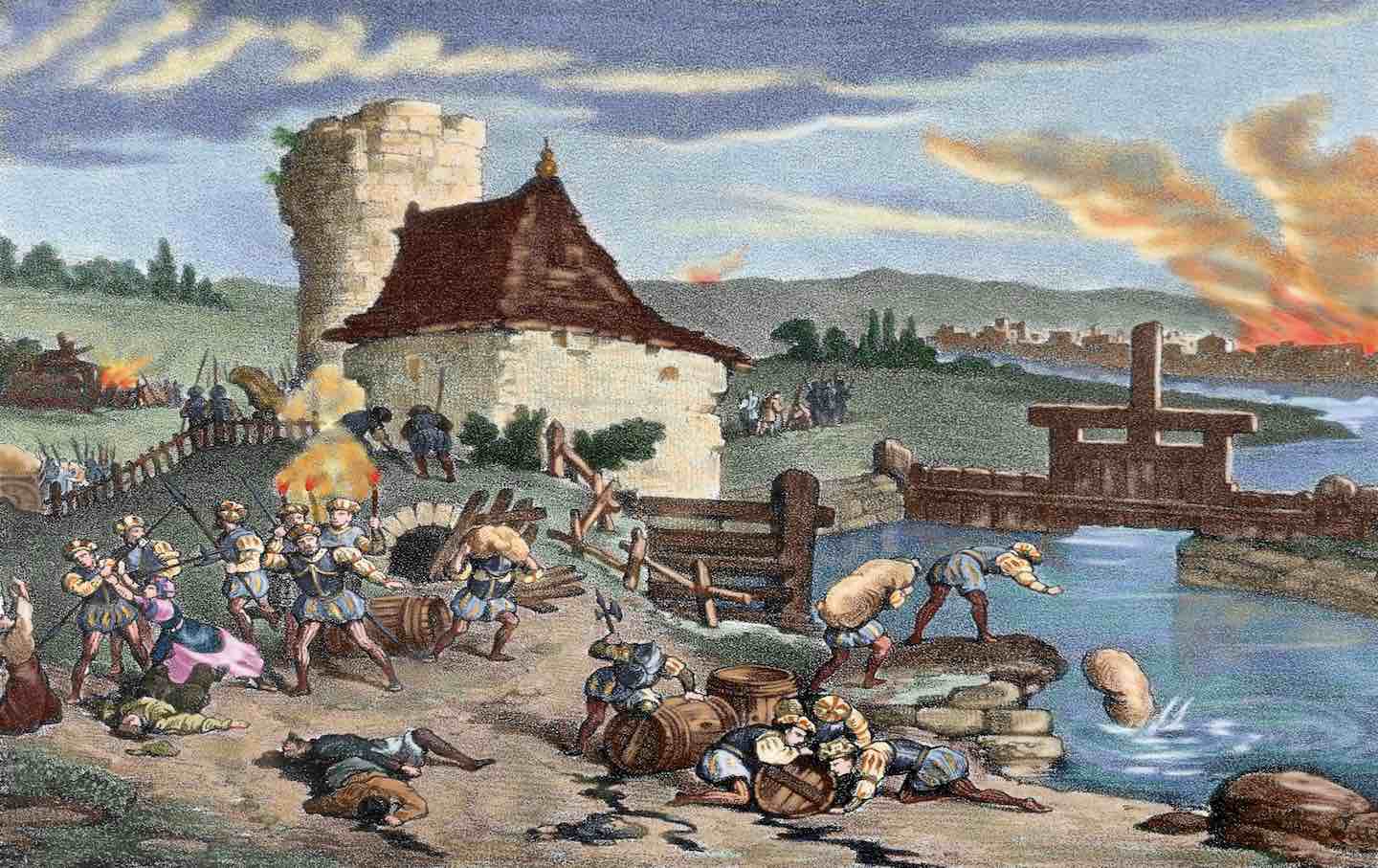
Thomas Müntzer’s Misunderstood Revolution Thomas Müntzer’s Misunderstood Revolution
A recent biography of the German preacher and leader of the Peasants’s War examines what remains radical about the short-lived rebellion he led.

Is It Possible to Suspend Disbelief at Ayad Akhtar’s AI Play? Is It Possible to Suspend Disbelief at Ayad Akhtar’s AI Play?
The Robert Downey Jr.–starring McNeal, which was possibly cowritten with the help of AI, is a showcase for the new technology’s mediocrity.
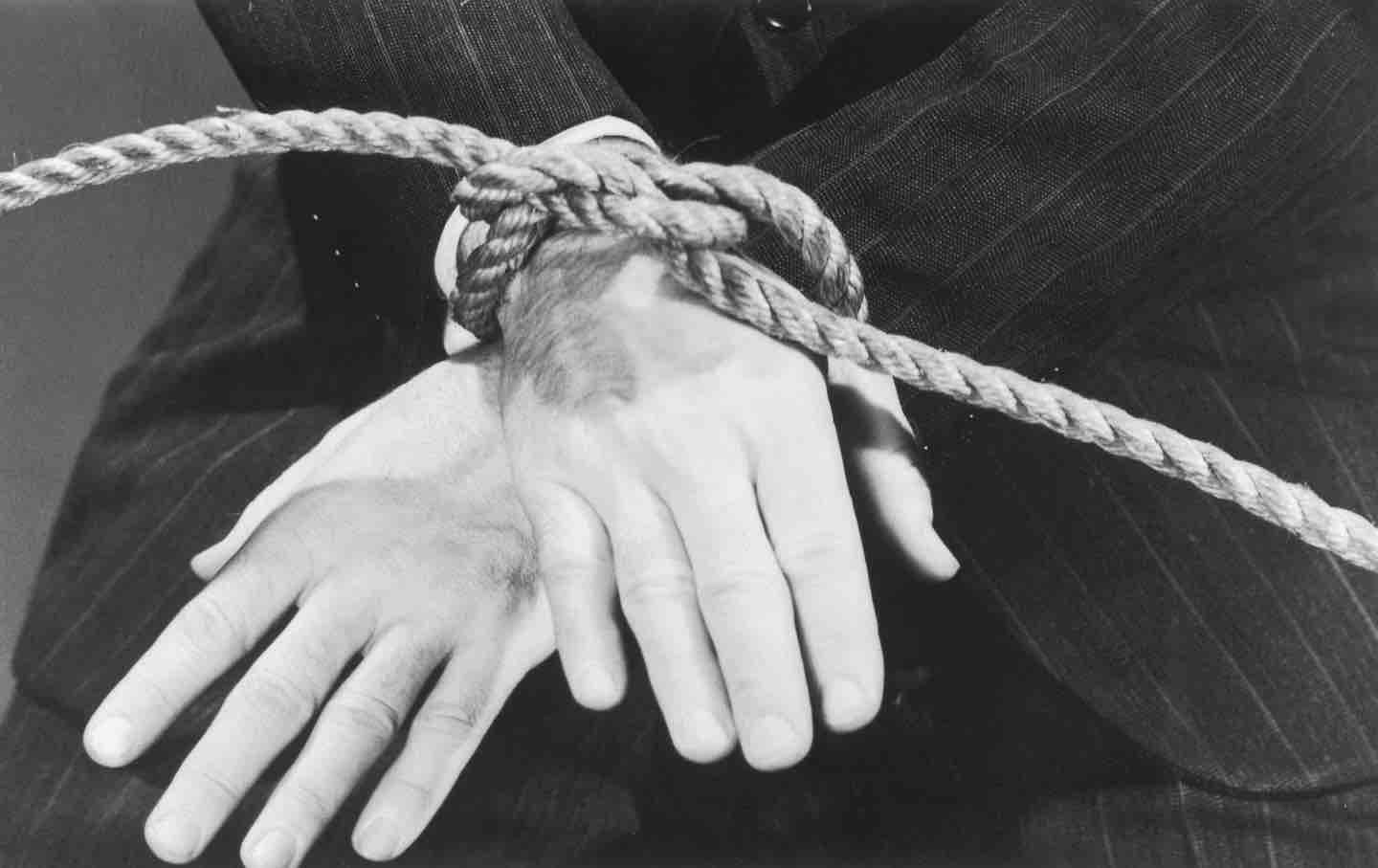
Possibility, Force, and BDSM: A Conversation With Chris Kraus and Anna Poletti Possibility, Force, and BDSM: A Conversation With Chris Kraus and Anna Poletti
The two writers discuss the challenges of writing about sex, loneliness, and the new ways novels can tackle BDSM.

Lore Segal’s Stubborn Optimism Lore Segal’s Stubborn Optimism
In her life and work, she moved through the world with a disarming blend of youthful curiosity and daring intelligence.


